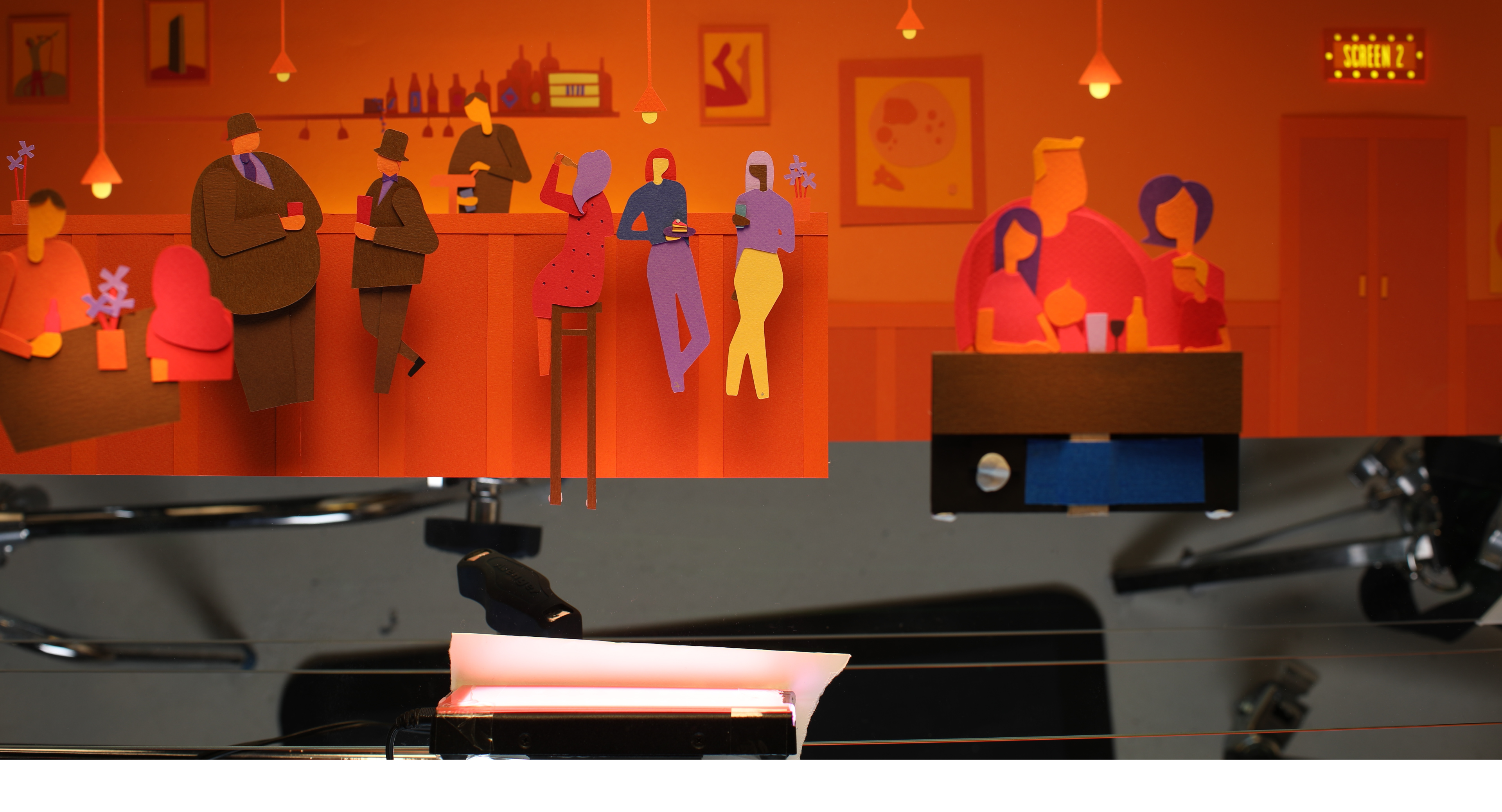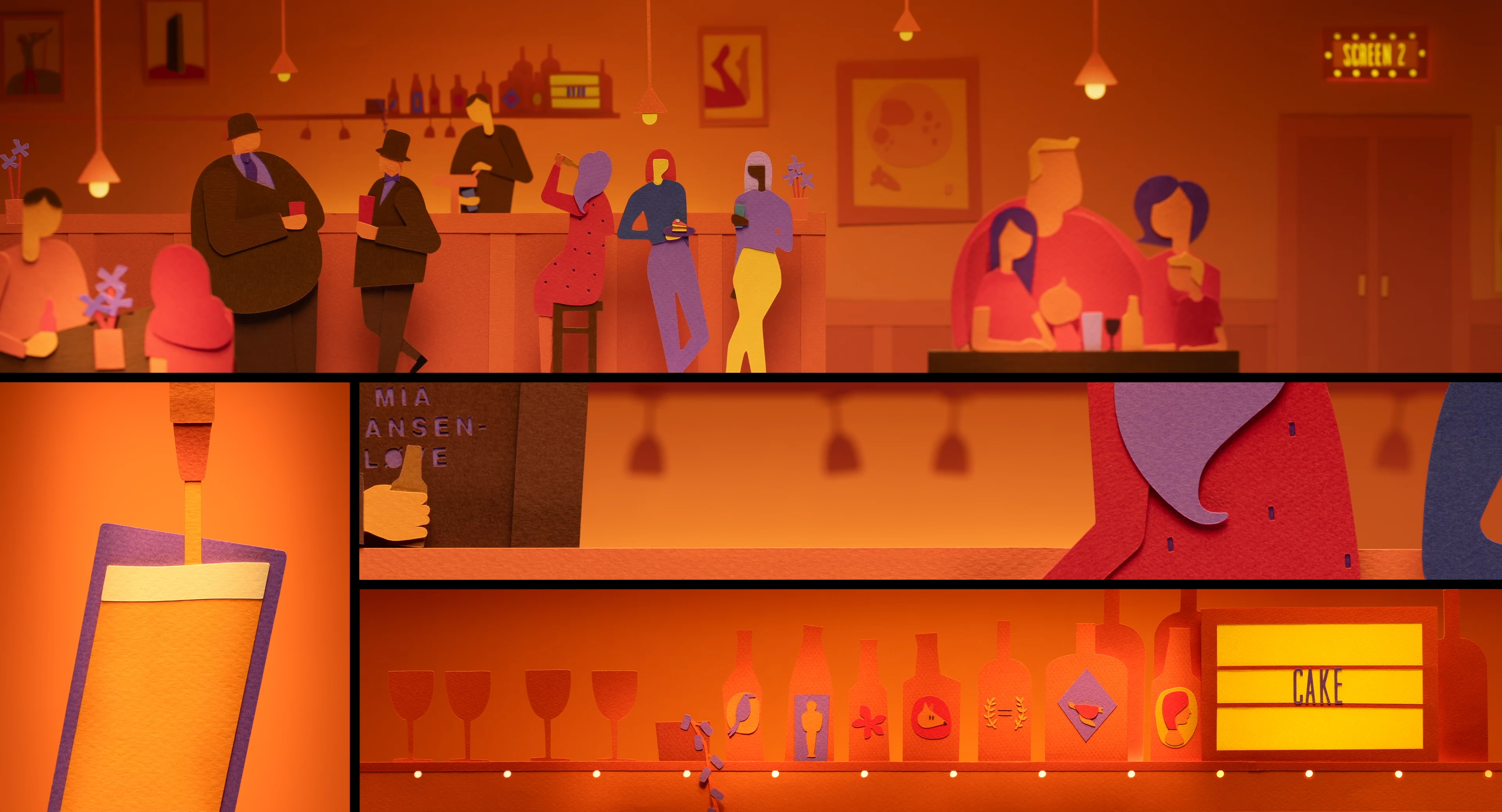Picturehouse celebrated their 30th anniversary with a new logo and wanted to update their ident accordingly. The ident should represent Picturehouse culture, the experience their venues provide and the films they love.
The previous project we worked on with Picturehouse has influenced much of their visual identity and so it was important that this ident adopt a similar approach.
The animation needed to stand up to repeat viewing because it would be played before every film and so would be seen multiple times by their audience.







